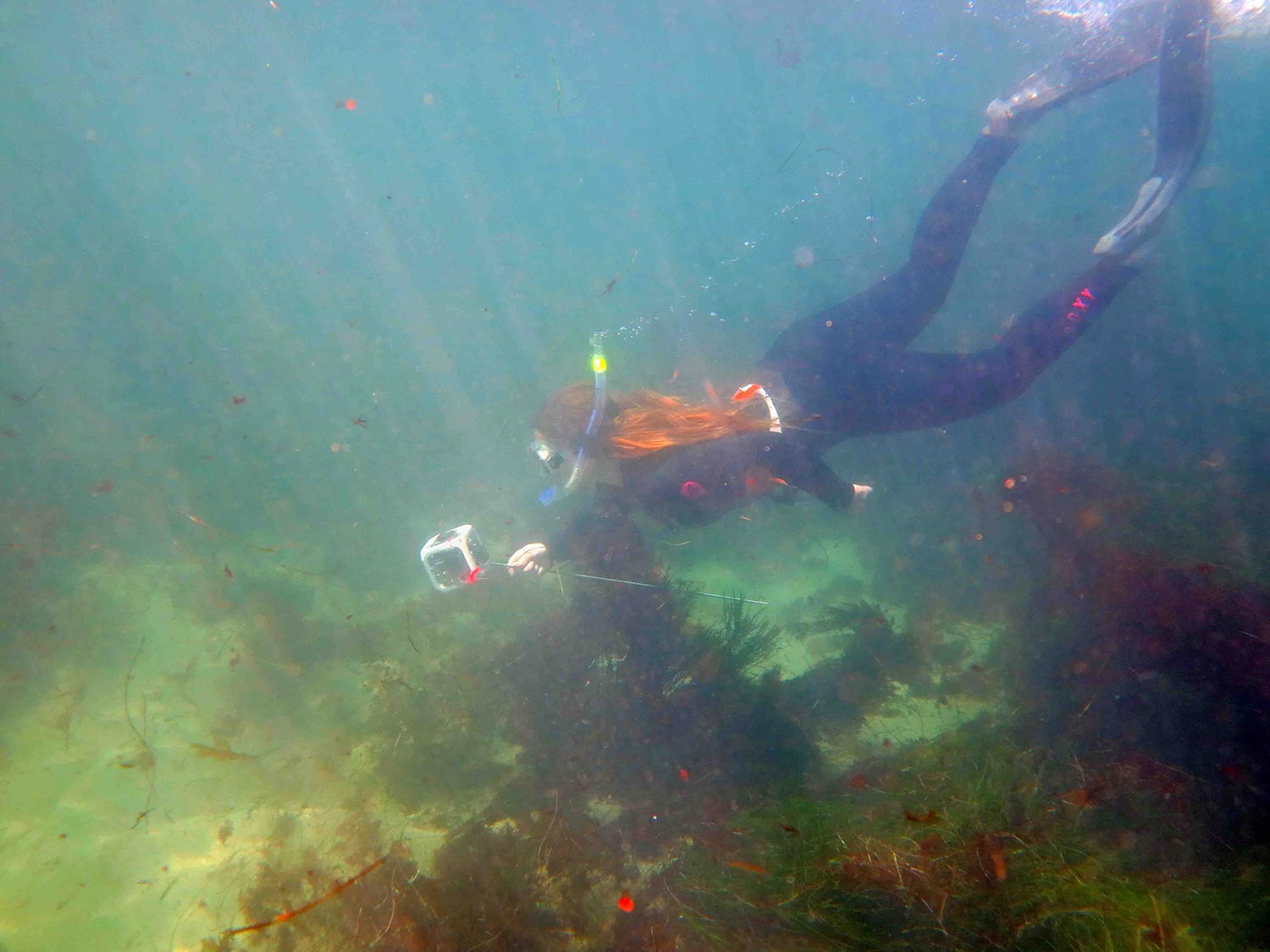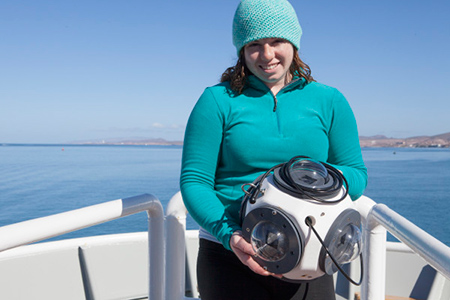
By:
- David Wang
Published Date
By:
- David Wang
Share This:

Capturing Public Support for an Endangered Species Through Photography
Just four hours south of the UC San Diego campus lives the most endangered marine mammal in the world: the vaquita porpoise. Despite the Mexican government’s ban on gillnet fishing in the northern Gulf of California, fishermen on the hunt for totoaba fish and shrimp continue to use the nets illegally, leading to the incidental capture of vaquita, which become tangled in the nets and drown. According to the World Wildlife Fund, the estimated 100 individuals remaining are at risk of becoming extinct by 2018 if incidental capture is not prevented immediately.

UC San Diego doctoral student Antonella Wilby.
The importance of these small cetaceans cannot be overemphasized. The vaquita is an apex predator that survives on smaller, more abundant marine creatures, keeping their populations in check and the ecosystem in balance, according to the San Diego Zoo Institute For Conservation Research:
UC San Diego doctoral student Antonella Wilby of the Kastner Research Group hopes she can help turn the vaquita’s long-term fate around by capturing the first underwater image of the endangered species in its natural habitat. Toward that goal, she has developed an underwater camera called the Spherecam. It contains six cameras orientated on the faces of a cube, provide a 360° view of the surrounding environment. Since different species of dolphins emit unique frequencies and patterns of vocalization to locate their predators and prey, Wilby has also developed an ultrasonic transducer in the underwater camera that is sensitive only to the vocalization of the vaquita porpoise.
“Dolphins can vocalize in a much wider frequency range than porpoises,” says Wilby. “The echolocation clicks of porpoises are in narrow-band, high-frequency bursts, whereas dolphin clicks cover a wider frequency range. Vaquita’s particular click has a peak energy at 139kHz and ranges from around 122 to 146 kHz, so we’re using an ultrasonic transducer that is sensitive in that band and looking for signals at 139kHz.”
The goal is to trigger the camera as soon as the Spherecam. Wilby is beginning her search for the vaquita close to home: her underwater camera will scan the waters of the Gulf of California.
The Vaquita monitoring project received noticeable attention earlier this year from National Geographic, which is funding Wilby’s project through a Young Explorers Grant. National Geographic recently published a blog post by Wilby and highlighted her innovative technological approach of using vaquita acoustic vocalizations to trigger the Spherecam.
In contrast to the harbor porpoise, whose photos have been captured along the Northern Hemisphere, the vaquita porpoise are extremely shy and difficult to track. And on the days when conditions were suitable for the team to go out on their small fishing boat, Wilby has observed that “they typically stay around 800 meters to a kilometer away from their research boats, when they are sighted.” Therefore, Wilby anticipates that “the system will need to be in place for a while before the strategy is effective, since even though we can detect vocalizations from far away, the animals will not always come within range of the cameras.”
Apart from the media attention that photographic documentation of the vaquita would draw, Wilby hopes to use the images to learn about the species. One method is to identify individual vaquita and track them over time. This would help to obtain a more accurate estimation of mothers and calves in this population, and also reveal social behaviors and breeding patterns.
For Wilby, this project builds on her vision as an engineer to build tools to further all fields of science. Her primary goal is “to solve problems in the field of robotics and apply that to exploring the ocean and the rest of the world.”
“Exploration and a love of nature have always been a fundamental part of my mindset,” she adds. “I didn’t grow up as a ‘tech kid’ with computers being a part of daily life. I spent most of my time outdoors, playing in the yard or on camping trips. But when I discovered the world of robotics and research, I realized that the mindset of an explorer and the mindset of a researcher are no different. Both are focused on discovery and fueled by an insatiable drive to push the limits of human knowledge.”
“When I came to UC San Diego and got involved in Engineers for Exploration and the Kastner Research Group, I learned that there are countless ways that technology and robotics can be directly applied to exploration,” said Wilby. “There’s so much we don’t know about the world, and so much left to be explored. I’ll be very excited if one day my job title is “Exploration Roboticist.”
And until the next project update, Wilby invites all to take action for this major conservation issue by signing VIVA Vaquita Coalition’s petition to make the gillnet ban in the Gulf of California permanent.
Share This:
You May Also Like
Stay in the Know
Keep up with all the latest from UC San Diego. Subscribe to the newsletter today.


